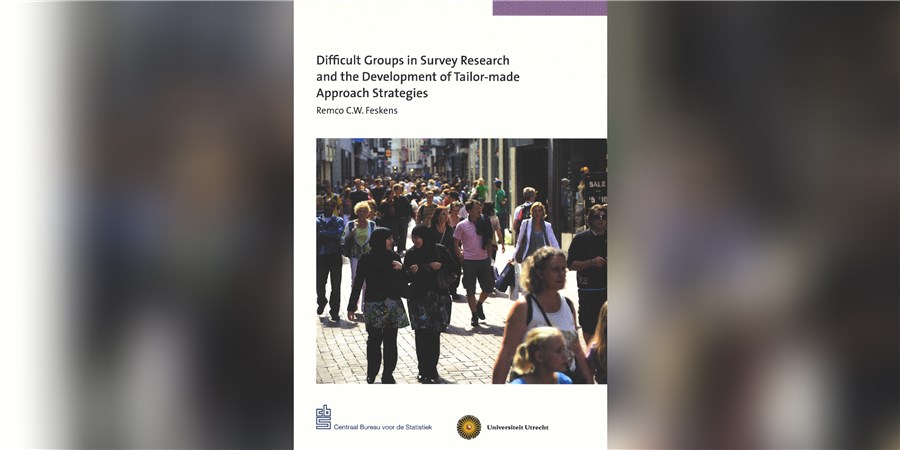Difficult groups in survey research and the development of tailor-made approach strategies

Difficult-to-observe groups in survey research is the subject of this thesis. The second chapter is an exploratory study of groups with similar response propensities. Two groups emerge from this study with above-average non-response rates. One is immigrants and the other is people living in small households in urban areas.
The third and fourth chapters deal with non-response among immigrants. Immigrants have above average non-response rates. However, these high non-response rates are more the result of factors other than ethnicity itself, structural equation analyses reveal. In particular, the urban living situation of immigrants explains the high non-response rate among this group.
Chapter four is an international comparison of non-response among immigrants. It shows that many countries use different demarcations for determining a person's ethnicity. Non-response among immigrants appears to be above average in all countries. Increasing the number of contact attempts seems to be a successful strategy to reduce non-response among ethnic minorities.
The fifth chapter of this thesis presents the results of an experiment in which stamps were enclosed with the letter of invitation to respondents. This turns out to be a successful measure to increase the response rate, especially in urban areas. Among immigrants, this reward or incentive appears to have little or no effect on the response rate.
These conclusions are further supported by the analyses on the effectiveness of using incentives on response rates among immigrants in chapter six. Response rates among natives who resemble immigrants on other characteristics, such as urbanity and income, increase sharply when stamps are deployed, while response rates among non-Western immigrants in the same situation remain virtually the same.
Finally, chapter seven discusses the possibilities of conducting survey research among residents of nursing and care homes. A pilot study among more than 500 residents of nursing and care homes shows that both high response rates among this group are possible and that the quality of the responses is sufficient. Moreover, the study shows that residents of nursing and residential homes tend to have different characteristics than peers living in independent households.
Feskens, R. C. W. (2009). Difficult groups in survey research and the development of tailor-made approach strategies. Dissertation, Utrecht University.
Downloads
- PDF - Dissertation Feskens